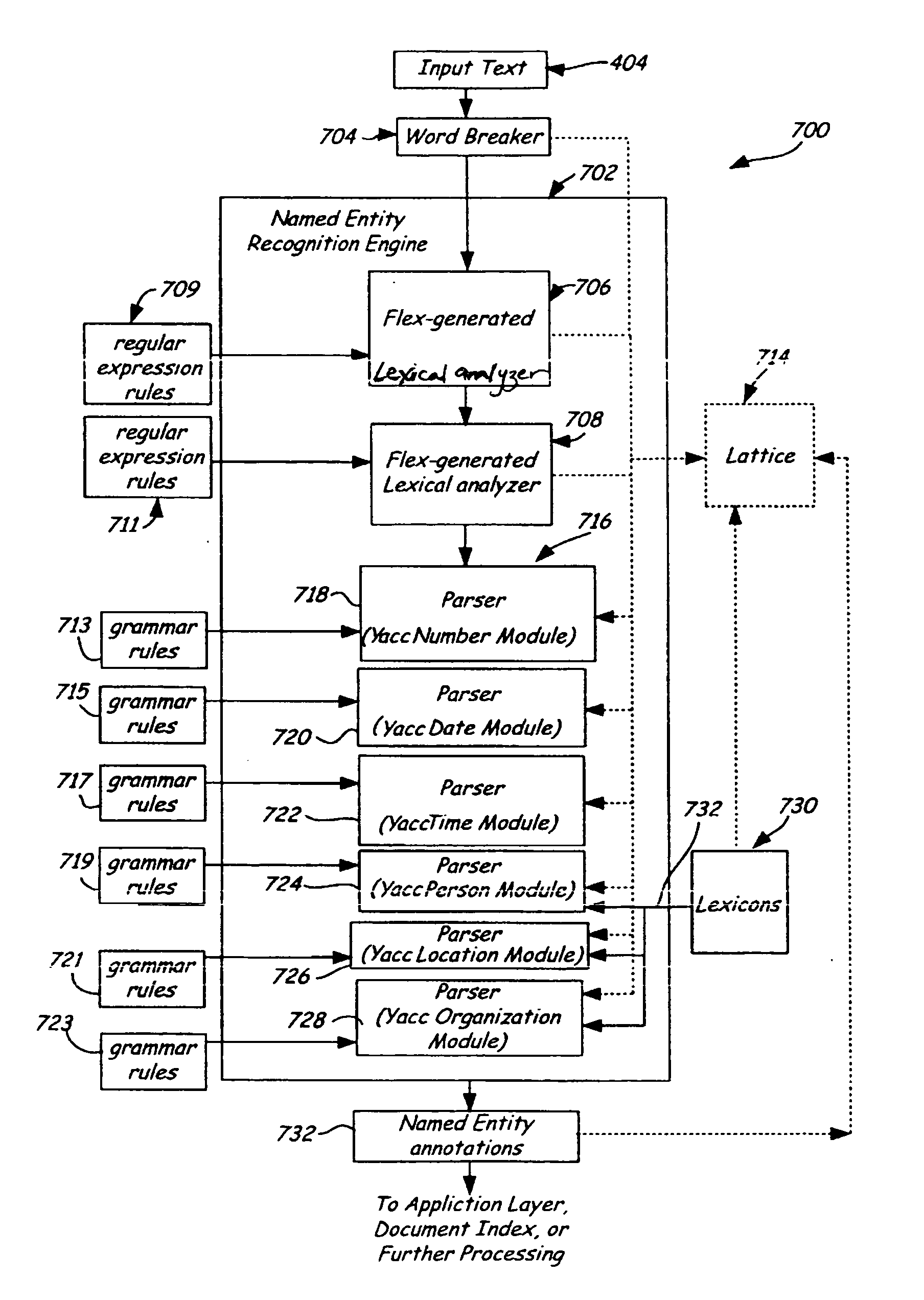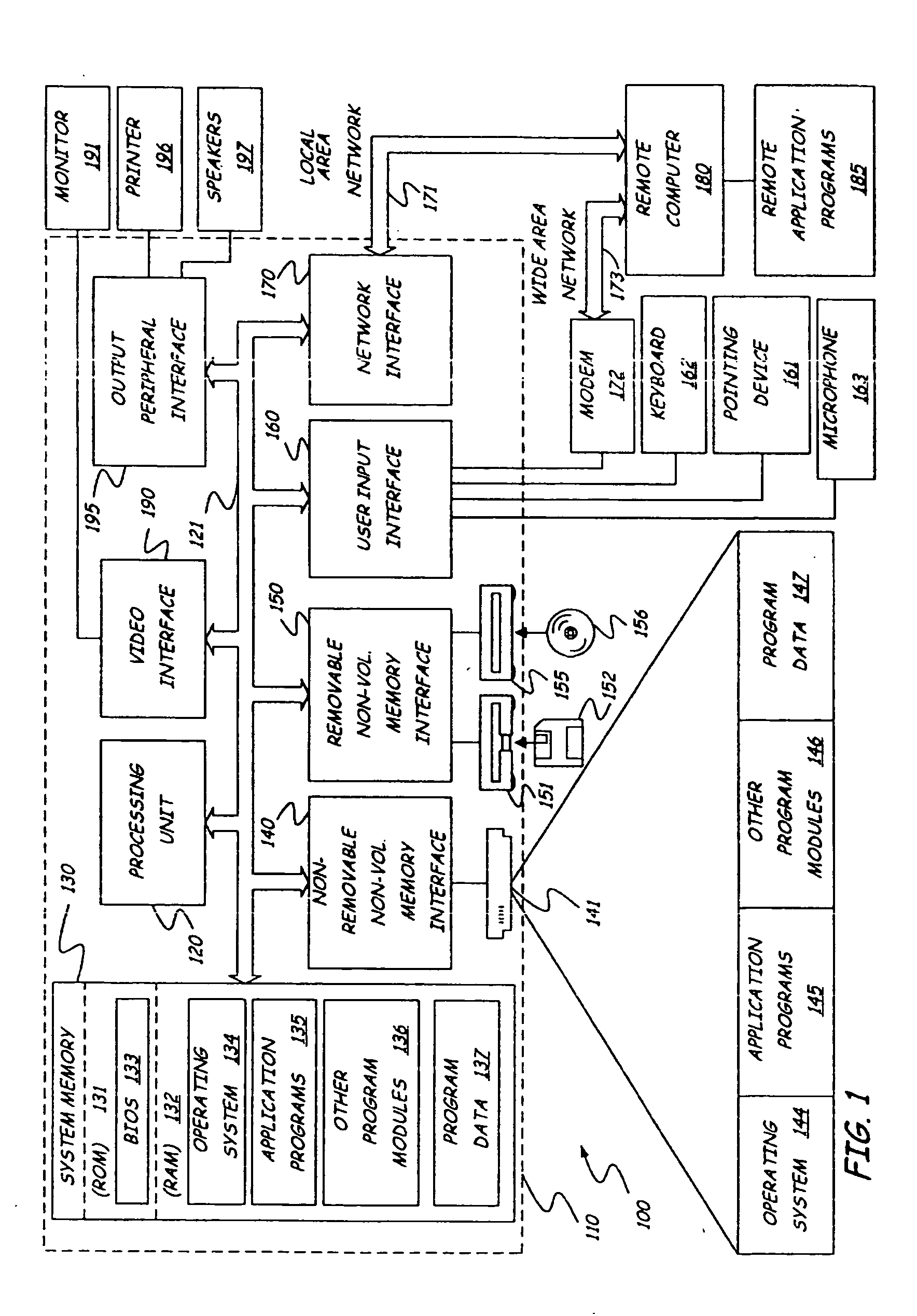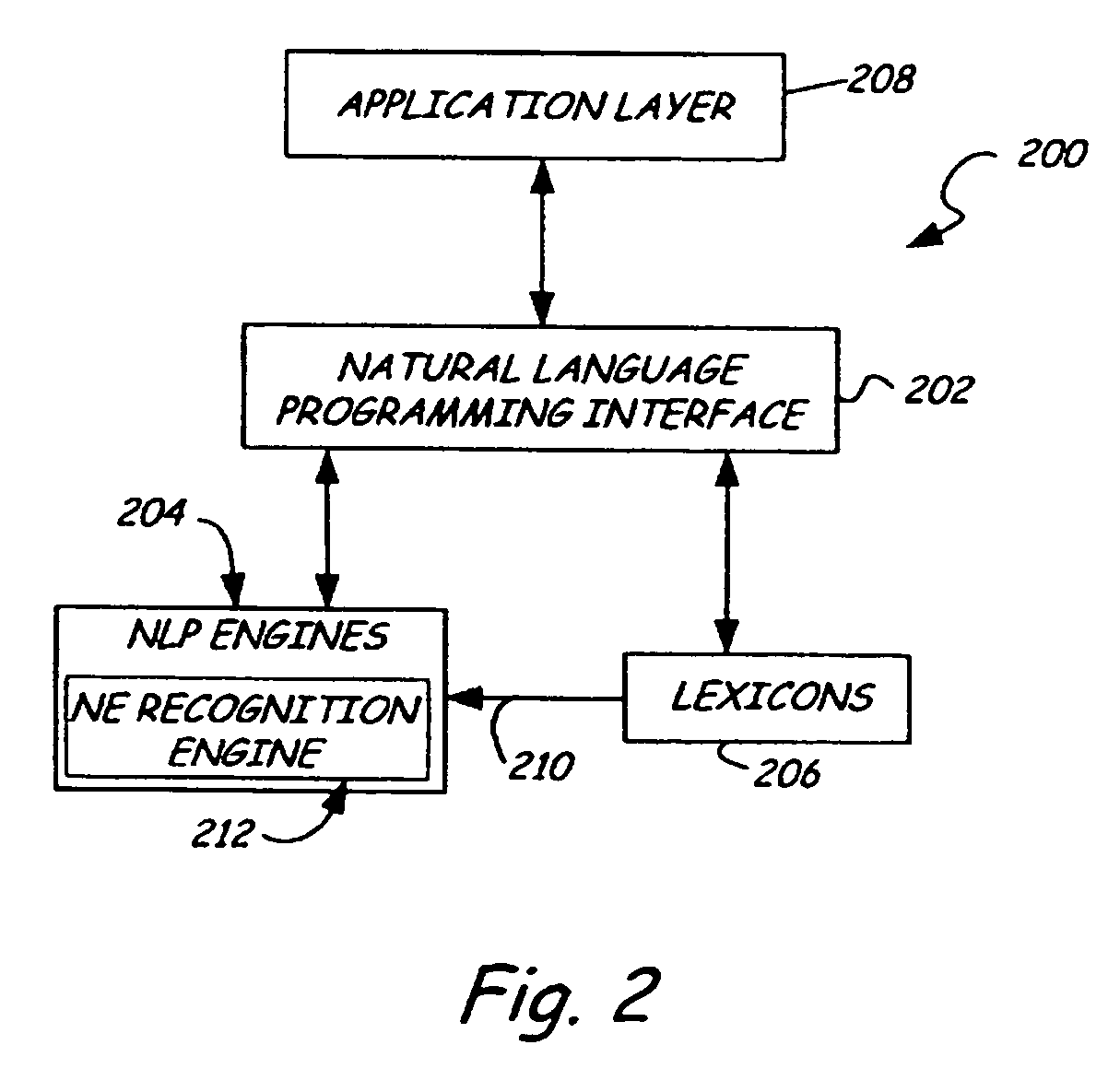Creating a document index from a flex- and Yacc-generated named entity recognizer
a named entity recognition and document index technology, applied in the field of natural language processing, can solve the problems of inability to reliably identify named entity terms by simple matching against stored lists or lexicons, inability to maintain all known names, and high computational cost of named entity recognition to be considered in any application
- Summary
- Abstract
- Description
- Claims
- Application Information
AI Technical Summary
Benefits of technology
Problems solved by technology
Method used
Image
Examples
Embodiment Construction
[0021] The present invention relates to identifying or extracting named entities in natural language text processing. As used herein, the term “named entity” includes numbers, date and time expressions, email addresses, web addresses, currencies, and other regular expressions. “Named entity” further includes names such as person, company, location, country, state, city, and the like. In one aspect, a standard machine compiler comprising compiler tools such as Flex and / or Yacc is used for named entity recognition, and in one particular aspect, to construct or update at least one index including named entities. However, prior to discussing the present invention in greater detail, one illustrative environment in which the present invention can be used will be described.
[0022]FIG. 1 illustrates an example of a suitable computing system environment 100 on which the invention may be implemented. The computing system environment 100 is only one example of a suitable computing environment ...
PUM
 Login to View More
Login to View More Abstract
Description
Claims
Application Information
 Login to View More
Login to View More - R&D
- Intellectual Property
- Life Sciences
- Materials
- Tech Scout
- Unparalleled Data Quality
- Higher Quality Content
- 60% Fewer Hallucinations
Browse by: Latest US Patents, China's latest patents, Technical Efficacy Thesaurus, Application Domain, Technology Topic, Popular Technical Reports.
© 2025 PatSnap. All rights reserved.Legal|Privacy policy|Modern Slavery Act Transparency Statement|Sitemap|About US| Contact US: help@patsnap.com



